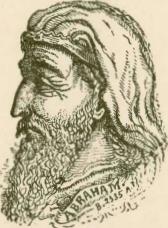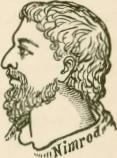30 HISTORIC GROWTH OF MAN.
Mohammedan conquest of India (from iooi A. D.), the influence of Persia as well as of Arabia again became an element in the growth of Hindoo civilization. The Parsees are still an influential class of people in Hindostan.
SEMITIC CIVILIZATION arose in the basins of the Euphrates and Tigris rivers and it divided into three well-marked branches. These were the Chaldean, the Assyrian and the Hebrew. Looking at our chart of Historic Growth we see that these sprang from the faculties in the group of wealth, centering in those
of familism. It was these ruling organs that gave the Assyrians and Chaldeans their boundless delight in war, wealth and power. The Hebrew branch centered on the faculties of familism and this imparted a deeper religious tinge to all their civil and religious institutions.
The rich and fertile alluvial plain which was ancient Chaldea and Mesopotamia, stretches along the rivers some four hundred miles by one hundred and more in breadth. This long tract between and besides the Euphrates and Tigris consists of a series of more and more elevated plateaus as we pass from the south to the north extremity where it is crossed by ranges of the Armenian mountains. It was in this fertile region that the Mosaic records placed the origin _of the ".white" race, or red men, as this record rightly calls them.
In the days of the Chaldean glory a vast net-work
of canals and water courses furnished and regulated
the irrigation of the whole lower part of this country.
A bountiful soil easily supplied the wants of a teeming
population. This and Palestine were the only coun
tries where wheat grew and still grows wild. Grain
often returned two hundred fold to the sower. The
traveler was greeted with the sight of fragrant groves
of palm trees and magnificent gardens, "rising like islands from a golden sea of waving corn." The highways were thronged with passengers going to and from the great marts of commerce. The land
was rich in corn and fruits and wine.
It was here that Nimrod, "the mighty hunter, " laid the foundations of Babel or Babylon, 2250 B. C. Its massive walls and temples well entitled it to the name of Bab-el or'' Gate of the Mighty. "
Abundant clay gave a plastic and
cheap building material, and the
bricks of Babylon and Assyria still endure the changes of time. The Chaldeans soon learned to stamp brick tablets and thus hand down a historic record to posterity. In later ages they gathered libraries of these tablets, numbering twenty or thirty thousands. They patiently cut figures upon hard stones, with sharp outlines that still remain. They wove fine fabrics of linen, muslin and silk. But rulers and rich men absorbed the easily produced wealth from the people. The great buildings were for the kings, and nobles and gods.
Science.was little developed. acid art was incipient.
ANCIENT SEMITES.
31

